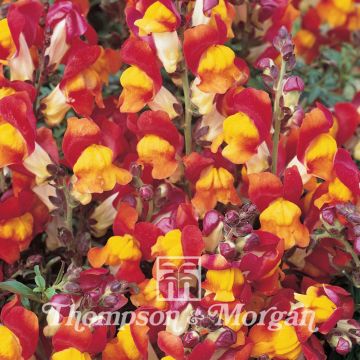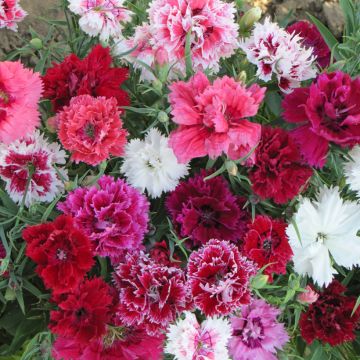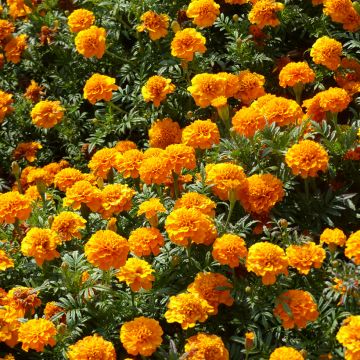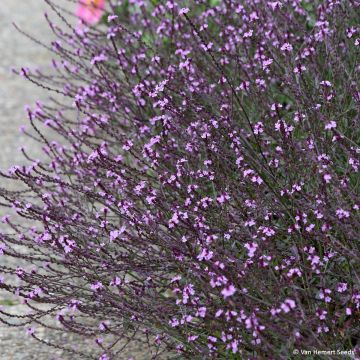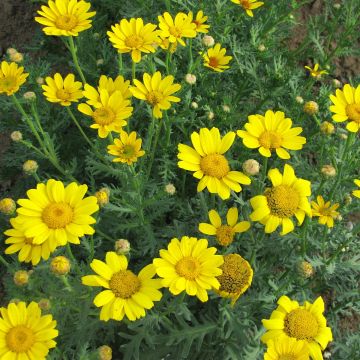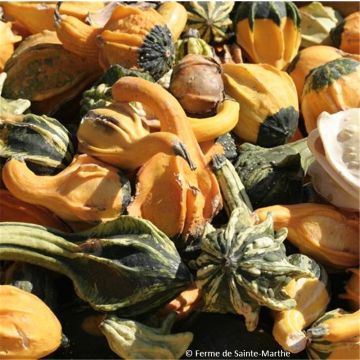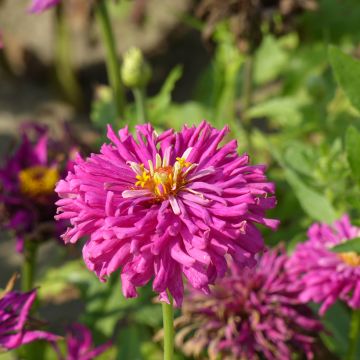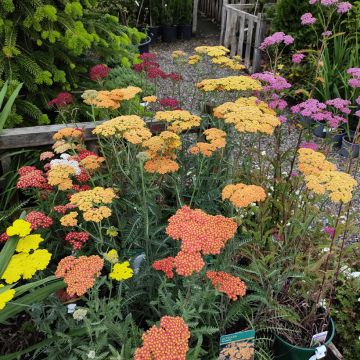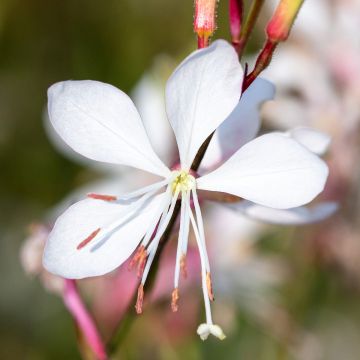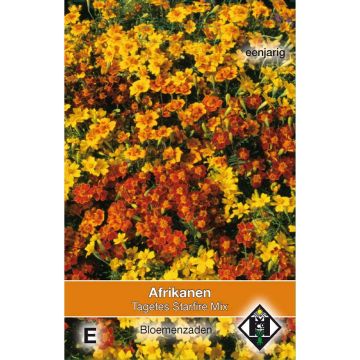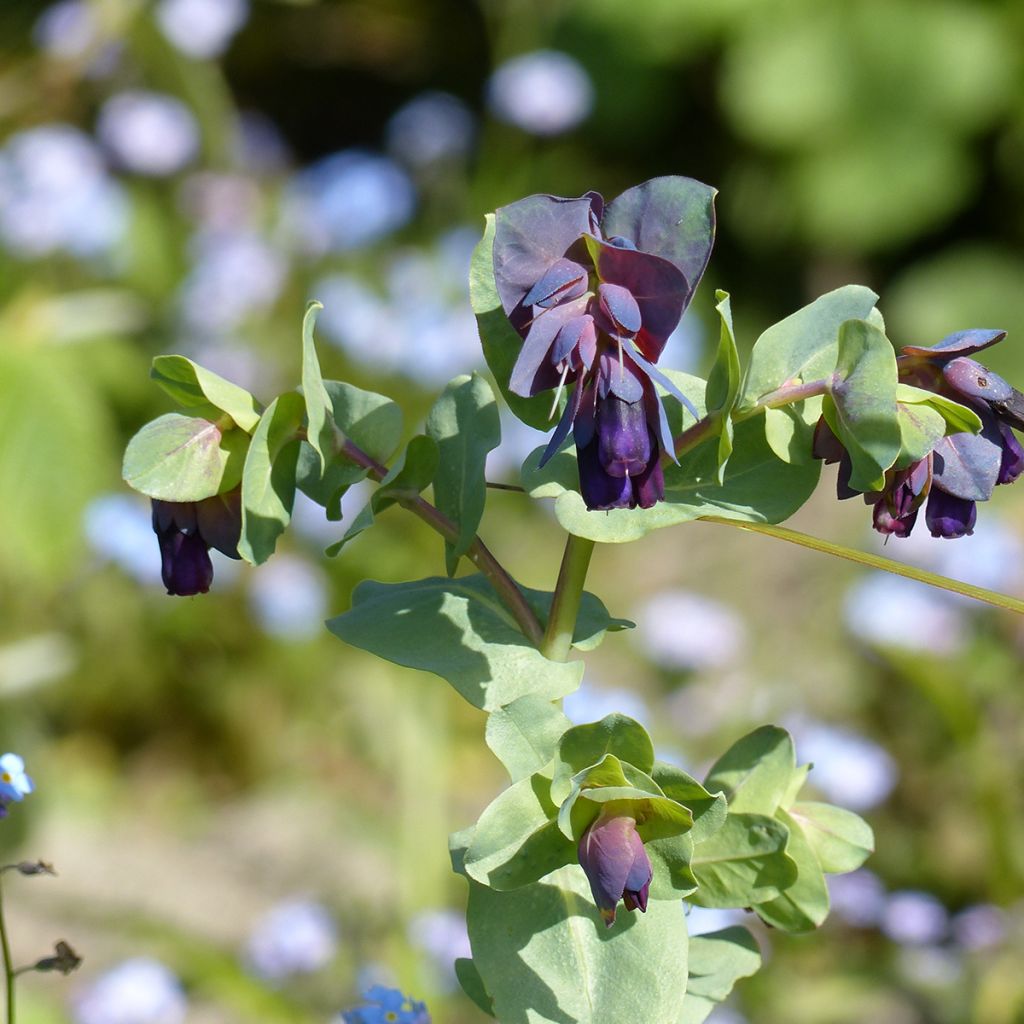

Honeywort Purpurascens Kiwi Blue Seeds - Cerinthe major
Honeywort Purpurascens Kiwi Blue Seeds - Cerinthe major
Cerinthe major Purpurescens Kiwi Blue
Honeywort
Beautiful plant, good germination.
Caroline , 20/08/2024
This item cannot be shipped to the selected country
Dispatch by letter from €3.90
More information
Schedule delivery date,
and select date in basket
This plant carries a 6 months recovery warranty
More information
We guarantee the quality of our plants for a full growing cycle, and will replace at our expense any plant that fails to recover under normal climatic and planting conditions.
Seed-only orders are dispatched by sealed envelope. The delivery charge for seed-only orders is €3.90.

Does this plant fit my garden?
Set up your Plantfit profile →
Description
Cerinthe major Purpurascens Kiwi Blue, also called Honeywort, is an annual or biennial of great ornamental value that is still rarely found in our gardens. It bears flowers encased in bracts that are tinged with a uniquely magnetic purplish-blue. Its golden flowers are embellished at the base with a red or purplish line and gracefully nod. It evokes succulent plants, with its thick heart-shaped, bluish-green leaves, spotted with white in the centre. It can be used to quickly fill the gaps between perennials, to cover the ground of dry slopes or to decorate a rock garden. They are extremely easy to sow in light, well-drained soil, in full sun.
Cerinthe major Purpurascens belongs to the family Boraginaceae, although it does not, at first sight, look at all like its cousin the borage. It is an annual or biennial plant, native to Mediterranean Europe and North Africa, that develops a taproot that allows it to grow in stony or sandy fields in poor, dry soil. In France, it is found in Provence, Languedoc, Ardèche and Corsica. This plant grows quickly and can even complete two growth cycles in one year. It forms a slightly succulent clump of foliage, made up of stems branching out from the ground that are covered with smooth, sheathed leaves of a satiny, bluish-green colour that are more or less punctuated with white spots. Flowering takes place from April to August, depending on the date of sowing. The stems are curled at their tips and unfurl, bearing 3 cm long, purplish-red tubular flowers. But its is the metallic, deep blue bracts of these flowers which glint in the light, that make this plant especially unique. The blooms are melliferous and are followed by the formation of 2 large black seeds per flower, which are easy to sow.
Cerinthe is the perfect plant to quickly cover the ground of barren slopes or the open spaces in a rock garden. It is imperative that the soil is well drained. Use it to easily create beautiful container displays, in a deep pot, together with the ornamental carrot Dara and Echium plantagenum. Its bluish hue combines wonderfully with that of zinc containers. Also install it in dry perennial beds, with grasses for example or plants with grey foliage (sagebrushes, false dittany, silverbush or Convolvulus althaeoides..).
Report an error about the product description
Flowering
Foliage
Plant habit
Botanical data
Cerinthe
major
Purpurescens Kiwi Blue
Boraginaceae
Honeywort
Mediterranean
Planting and care
Sowing Cerinth major purpurascens is almost impossible to fail. Once the plant has finished flowering, let the plant produce seeds that are large and black once mature. You can sow two different ways: 1- Collect the ripe seeds and sow them at a more favourable time, in September-October for plants that flower in April-May, or in April-May for summer flowering, or sow in July to obtain blooms in the autumn. 2- Allow spontaneous self-seeding : your new plants will bloom from the end of April and May (autumn sowing), then in July (May sowing) and finally in October (summer sowing). Direct sowing in the open ground gives good results and very strong plants since it allows their taproot to plunge deeply and quickly into the soil, producing more drought-resistant, well-branched plants. It is best to always collect seeds so that you have a reserve in case the plants are destroyed by a particularly harsh winter. To help the seeds germinate in containers, leave the seeds to soak for 2 or 3 days in a glass of water. When they are visibly swollen, push them into a pot containing garden soil mixed with a little coarse sand or fine gravel. The soil should remain very moist and the pot should be kept under cover until the first shoots have emerged from the seed's casing. Germination is quick: the seedlings will easily reach 5 cm high. When the first 2 leaves appear, you can usually see the roots come out of the base of the pot, and you then know it is time to prick out the seedlings into larger, individual pots. Once they have 4 leaves, the terminal bud can be pinched in order to force the plant to branch out and produce more flower stems. It is useful to gradually harden off the seedlings by placing them outdoors in the shade for a few hours each day, when the weather is not too cold. They should be acclimatized to full sun very gradually, before they are planted out into the garden in their final position
Sowing period
Intended location
-
, onOrder confirmed
Reply from on Promesse de fleurs
Flower seeds
Haven't found what you were looking for?
Hardiness is the lowest winter temperature a plant can endure without suffering serious damage or even dying. However, hardiness is affected by location (a sheltered area, such as a patio), protection (winter cover) and soil type (hardiness is improved by well-drained soil).

Photo Sharing Terms & Conditions
In order to encourage gardeners to interact and share their experiences, Promesse de fleurs offers various media enabling content to be uploaded onto its Site - in particular via the ‘Photo sharing’ module.
The User agrees to refrain from:
- Posting any content that is illegal, prejudicial, insulting, racist, inciteful to hatred, revisionist, contrary to public decency, that infringes on privacy or on the privacy rights of third parties, in particular the publicity rights of persons and goods, intellectual property rights, or the right to privacy.
- Submitting content on behalf of a third party;
- Impersonate the identity of a third party and/or publish any personal information about a third party;
In general, the User undertakes to refrain from any unethical behaviour.
All Content (in particular text, comments, files, images, photos, videos, creative works, etc.), which may be subject to property or intellectual property rights, image or other private rights, shall remain the property of the User, subject to the limited rights granted by the terms of the licence granted by Promesse de fleurs as stated below. Users are at liberty to publish or not to publish such Content on the Site, notably via the ‘Photo Sharing’ facility, and accept that this Content shall be made public and freely accessible, notably on the Internet.
Users further acknowledge, undertake to have ,and guarantee that they hold all necessary rights and permissions to publish such material on the Site, in particular with regard to the legislation in force pertaining to any privacy, property, intellectual property, image, or contractual rights, or rights of any other nature. By publishing such Content on the Site, Users acknowledge accepting full liability as publishers of the Content within the meaning of the law, and grant Promesse de fleurs, free of charge, an inclusive, worldwide licence for the said Content for the entire duration of its publication, including all reproduction, representation, up/downloading, displaying, performing, transmission, and storage rights.
Users also grant permission for their name to be linked to the Content and accept that this link may not always be made available.
By engaging in posting material, Users consent to their Content becoming automatically accessible on the Internet, in particular on other sites and/or blogs and/or web pages of the Promesse de fleurs site, including in particular social pages and the Promesse de fleurs catalogue.
Users may secure the removal of entrusted content free of charge by issuing a simple request via our contact form.
The flowering period indicated on our website applies to countries and regions located in USDA zone 8 (France, the United Kingdom, Ireland, the Netherlands, etc.)
It will vary according to where you live:
- In zones 9 to 10 (Italy, Spain, Greece, etc.), flowering will occur about 2 to 4 weeks earlier.
- In zones 6 to 7 (Germany, Poland, Slovenia, and lower mountainous regions), flowering will be delayed by 2 to 3 weeks.
- In zone 5 (Central Europe, Scandinavia), blooming will be delayed by 3 to 5 weeks.
In temperate climates, pruning of spring-flowering shrubs (forsythia, spireas, etc.) should be done just after flowering.
Pruning of summer-flowering shrubs (Indian Lilac, Perovskia, etc.) can be done in winter or spring.
In cold regions as well as with frost-sensitive plants, avoid pruning too early when severe frosts may still occur.
The planting period indicated on our website applies to countries and regions located in USDA zone 8 (France, United Kingdom, Ireland, Netherlands).
It will vary according to where you live:
- In Mediterranean zones (Marseille, Madrid, Milan, etc.), autumn and winter are the best planting periods.
- In continental zones (Strasbourg, Munich, Vienna, etc.), delay planting by 2 to 3 weeks in spring and bring it forward by 2 to 4 weeks in autumn.
- In mountainous regions (the Alps, Pyrenees, Carpathians, etc.), it is best to plant in late spring (May-June) or late summer (August-September).
The harvesting period indicated on our website applies to countries and regions in USDA zone 8 (France, England, Ireland, the Netherlands).
In colder areas (Scandinavia, Poland, Austria...) fruit and vegetable harvests are likely to be delayed by 3-4 weeks.
In warmer areas (Italy, Spain, Greece, etc.), harvesting will probably take place earlier, depending on weather conditions.
The sowing periods indicated on our website apply to countries and regions within USDA Zone 8 (France, UK, Ireland, Netherlands).
In colder areas (Scandinavia, Poland, Austria...), delay any outdoor sowing by 3-4 weeks, or sow under glass.
In warmer climes (Italy, Spain, Greece, etc.), bring outdoor sowing forward by a few weeks.



































